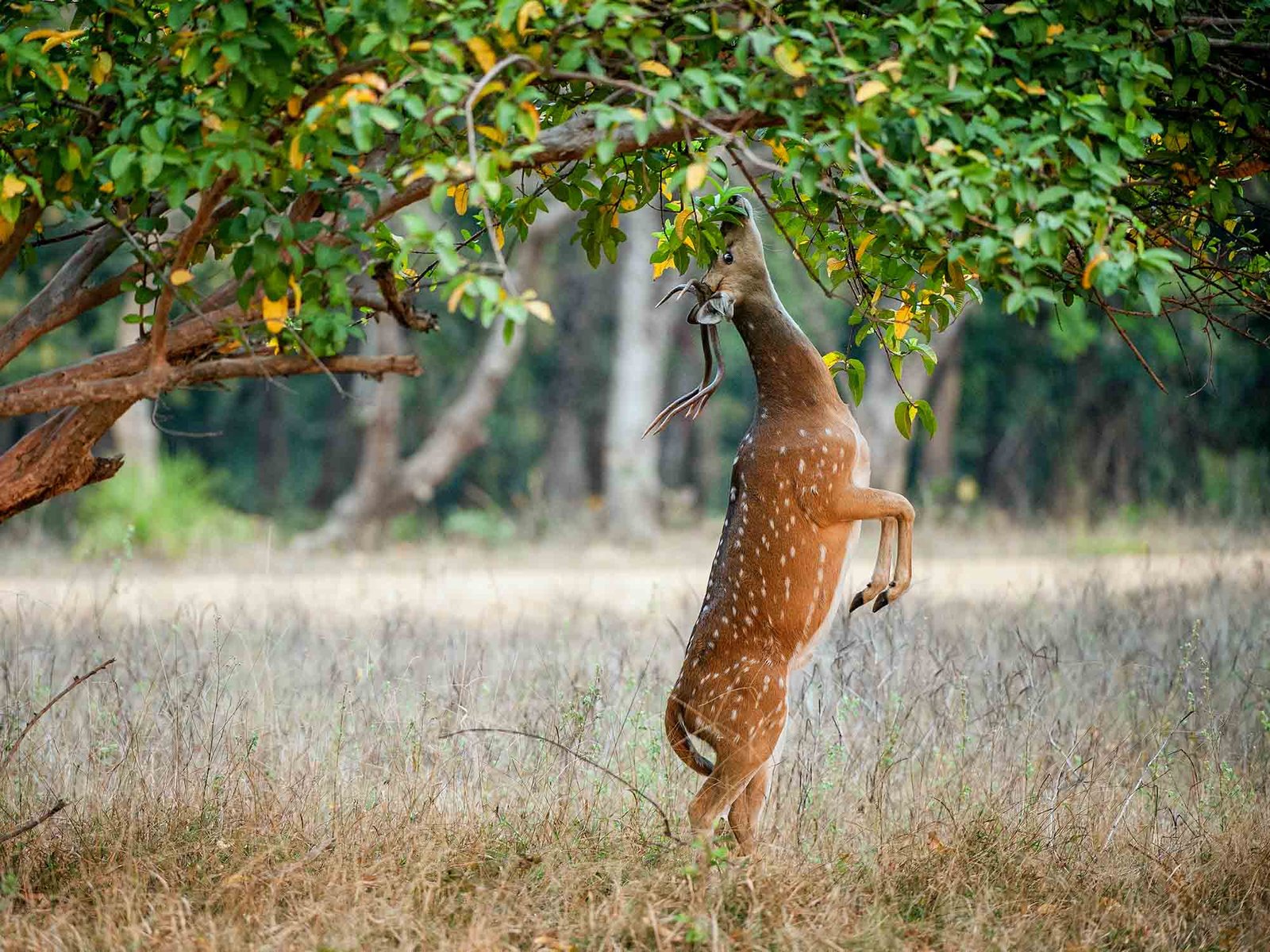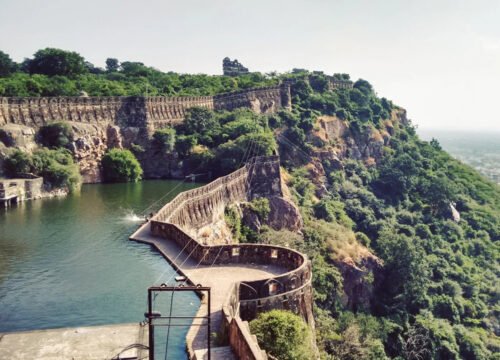Sawai Madhopur and Ranthambore: Gateway to the Wild
Sawai Madhopur: Historical and Cultural Attractions
Ranthambore Fort
Situated within Ranthambore National Park, the Ranthambore Fort is a UNESCO World Heritage site and a testament to the region's rich history. Built in the 10th century by the Chauhan rulers, the fort stands majestically atop a hill, offering panoramic views of the park. The fort's architecture is a blend of Hindu and Muslim styles, reflecting the various dynasties that ruled the region. Key attractions within the fort include the Ganesha Temple, Rani Haveli, Badal Mahal, and Hammir Court. The fort's ruins, temples, and step-wells provide a fascinating glimpse into its storied past.
Trinetra Ganesha Temple
Located within the Ranthambore Fort, the Trinetra Ganesha Temple is one of the oldest temples in Rajasthan. It is dedicated to Lord Ganesha, who is worshipped here in his three-eyed form. Devotees from across the country visit this temple to seek blessings and offer prayers. The temple is especially vibrant during the Ganesh Chaturthi festival, when it is adorned with decorations and hosts various cultural events.
Rajiv Gandhi Regional Museum of Natural History
Shilpgram
Shilpgram is a rural arts and crafts complex located near Sawai Madhopur. It serves as a cultural hub, promoting traditional Rajasthani arts and crafts. Visitors can explore various stalls and workshops showcasing handmade textiles, pottery, jewelry, and paintings. Shilpgram also hosts cultural performances, including folk dances and music, offering an immersive cultural experience.
Ranthambore National Park: A Wildlife Haven
Flora and Fauna
Tigers
The Bengal tiger is the star attraction of Ranthambore National Park. The park's relatively small area and its diverse landscape of forests, grasslands, and water bodies make it one of the best places in India to spot these magnificent predators. Visitors often encounter tigers during safaris, especially around the lakes and waterholes where they come to drink and hunt.
Other Wildlife
In addition to tigers, Ranthambore is home to a variety of wildlife, including:
- Leopards: Though more elusive than tigers, leopards are also present in the park.
- Sloth Bears: Known for their distinctive shaggy coats, sloth bears can sometimes be spotted foraging for insects.
- Deer: The park is inhabited by several species of deer, including sambar, chital (spotted deer), and nilgai (blue bull).
- Crocodiles: The lakes and rivers of Ranthambore are home to mugger crocodiles, often seen basking on the banks.
- Birds: Ranthambore is a birdwatcher’s paradise, with over 300 species of birds, including crested serpent eagles, painted storks, peafowl, and various migratory birds.
Vegetation
The park's vegetation is primarily dry deciduous forest, with dhok trees being the dominant species. The forest is interspersed with grasslands and water bodies, creating a diverse habitat that supports a wide range of wildlife.
Safaris and Wildlife Viewing
Ranthambore National Park offers jeep and canter safaris, which are the best ways to explore the park and spot wildlife. Safaris are conducted twice daily, in the early morning and late afternoon, when animals are most active. The park is divided into several zones, each offering unique opportunities for wildlife sightings. Booking safaris in advance is recommended, especially during peak tourist season.
Conclusion
Sawai Madhopur and Ranthambore together offer a unique blend of history, wildlife adventure, and cultural experiences. Whether exploring the ancient Ranthambore Fort, embarking on a thrilling safari to spot tigers, or immersing yourself in the local culture, this region promises an unforgettable journey. The rich biodiversity of Ranthambore National Park and the historical significance of Sawai Madhopur make it a must-visit destination for nature lovers, history buffs, and adventure seekers alike.

 Toll-Free 1-855-952-6526
Toll-Free 1-855-952-6526 +44 01753 201201
+44 01753 201201  + 61-2-86078986
+ 61-2-86078986 






